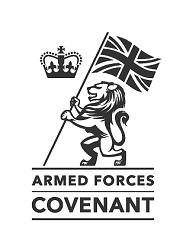|
|
|
Verdun...
The Battle of Verdun was fought from 21st February to 18th December 1916 between French and German armies, on the hills
north of Verdun-sur Meuse in Northeast France. This battle was significant for a number of reasons:
There was a documented estimate in 2,000 stating the casualties total for this battle to stand at 714,231;
377,231 French and 337,000 German. A staggering 70,000 per month of the battle. This was the longest and one of the most costly
battles in human history. More recent estimates increase the number of casualties to 976,000. ......... o
O o ......... If you need Military Bands or Assistance with Honouring Veterans - Please contact your local Royal British Legion. If sadly this is for a Military Funeral or Honouring Veterans at their Funeral, the best contact points are here. The Commonwealth War Graves Commission has the responsibility to ensure that 1.7 million people who died in the two world wars will never be forgotten. They care
for cemeteries and memorials at 23,000 locations, in 153 countries. The CWGC values and aims, laid out in 1917, are as relevant
now as they were over a 100 years ago.... ......... o O o ......... We have added a number
of further pages and Picture Galleries to our website for you of The National Memorial Arboretum, the Ypres Salient, Flanders & The Menin Gate, Nord Pas de Calais, Somme, Vimy Ridge, Verdun and World War 1 Main Page and seven underpinning pages. ......... o O o ......... The images below are: Picture 1 {0491} - A memorial to the lost of Fleury-devant-Douaumont, This was once a thriving community which is now
wiped out. No original buildings survive, only shell holes and occasional debris and rubble. During the Battle of Verdun in
1916 the village had been captured and recaptured 16 times. Since 1916 the population is officially 0. Picture 2
{0506} - The Ossuary At Douaumont, it was built between 1922 and 1932. The building is 137 metres long and was inaugurated
by President Lebrun in August 1932. Picture 3 {0511} - The view from the Ossuary over the vast cemetery
at Douaumont. Picture 4 {0512} - This plaque marks the meeting of Helmut Kohl and Francois Mitterrand
when they attended a memorial service to commemorate the 70th anniversary of the start of WW1. This happened on the 22nd September
1984. In 2000 an estimate of over 714,000 dead was applied to the Battle of Verdun. Recently estimates have risen to 976,000
casualties. The 300-day Battle of Verdun was the longest and one of the most costly in human history. Picture
5 {0514} - The tower on the Ossuary at Douaumont. The tower is 46m high and contains a bronze death bell weighing two
metric tons called Bourdon de la Victoire. Picture 6 {0518} - The cemetery adjacent to the Ossuary at Douaumont
is vast. There are 16,142 French soldiers laid here making it the biggest French WW1 cemetery in the world. Picture
7 {0520} - Soldiers of the Islamic faith also lay in Douaumont cemetery; note how their headstones face to the East. The memorial
in the background is evocative of a North African Mosque. Picture 8 {0521} - The Ossuary at Douaumont is a
memorial to French and German casualties of the battle of Verdun. In the small, lower windows of the building the skeletal
remains of 130,000 French and German soldiers can be seen. The cloister is 137m long and contains 42 interior alcoves. Picture 9 {0525} - Fort Douaumont on Hill 388 was the largest and the highest of 19 forts built in the latter part
of the 19th century to protect the city of Verdun. By 1915 it was clear to the French that these forts would offer little
resistance to the German 420mm Gamma guns (giant howitzers); these guns had already ripped through a number of Belgian forts
in 1914. Douaumont was left little defended by the French and partly disarmed and as a result a small German raiding party
easily took the Fort on 25th February 1916. Douaumont was finally recaptured by the French on 24th October 1916, thus ending
the Battle of Verdun. Picture 10 {0528} - On top of Fort Douaumont. Built in 1885 and covering a surface
area of 30,000 square metres, the Fort was equipped with numerous armed posts including rotating and retractable 75mm and
155mm guns. These images are kindly provided by Ian Humphreys, RBL, and are his Copyright. You may click on
the thumb nail images for the original - these are high res images and may not be used for commercial purposes without full
written consent from Mr Humphreys. Each image is 3264 x 2448 pixels or 3008 x 2000 pixels and are several MB in size...
Enter content here Enter content here Enter content here |
||||||||||
AREA17: So that we may all remember those that served, those injured and those that fell for the peace
and security of all...

